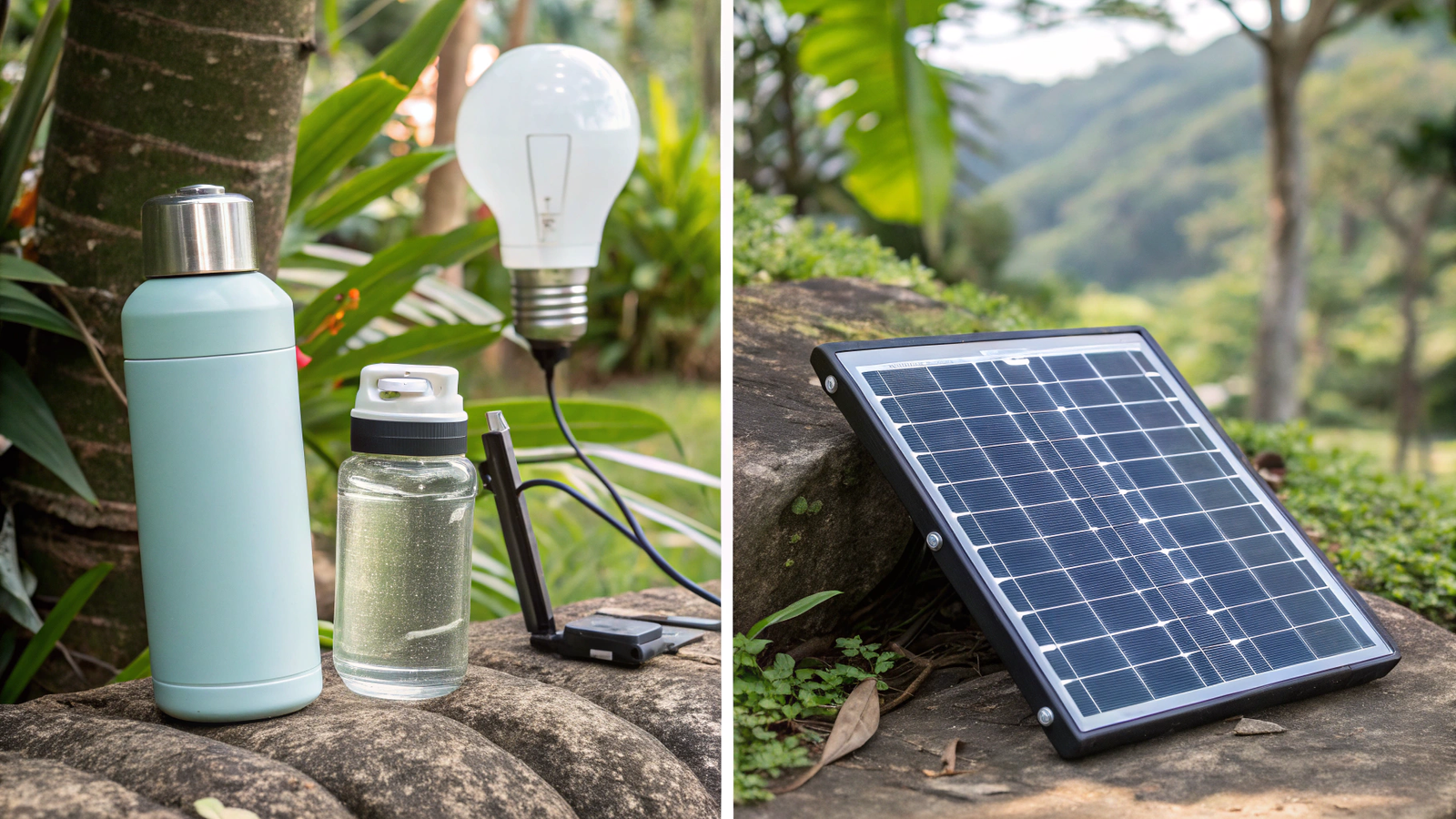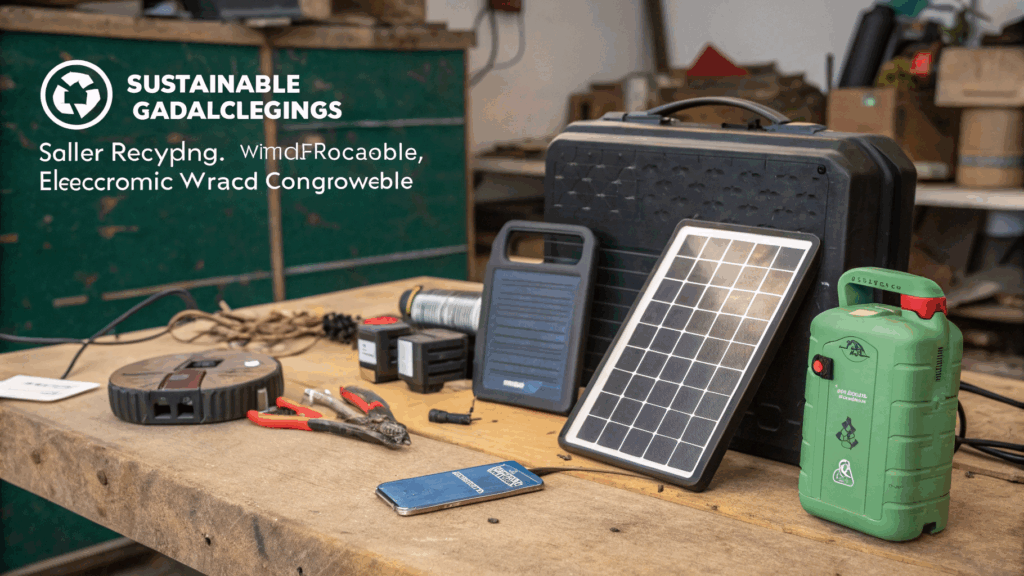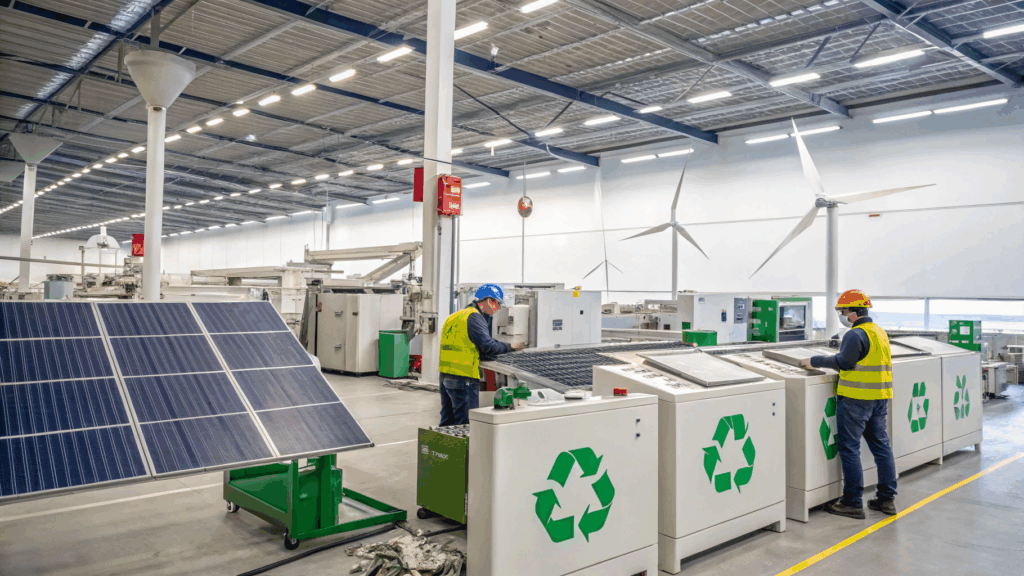
Technological Advancements in Sustainable Consumer Electronics
Introduction
In an age where digital connectivity drives economies, lifestyles, and social structures, consumer electronics—from smartphones and laptops to smart home systems—have become indispensable. However, the rapid pace of technological innovation has given rise to an equally rapid accumulation of electronic waste (e-waste), unsustainable mining for raw materials, and soaring energy consumption.
In response to growing environmental concerns, the global electronics industry has begun shifting toward sustainability. Technological advancements in sustainable consumer electronics are now at the forefront of this evolution, as innovators seek to design, manufacture, and distribute gadgets with minimal environmental impact. This transformation is not only essential for the planet but also a strategic imperative for companies hoping to future-proof their brands and meet changing consumer expectations.
This article explores the latest advancements in sustainable consumer electronics, the technologies that enable them, and their role in promoting environmental responsibility.

1. Sustainable Materials and Eco-Design
a. Biodegradable and Recycled Materials
One of the earliest—and most visible—efforts in sustainable electronics has been the shift from virgin plastics to recycled and biodegradable materials. Recycled aluminum, ocean-bound plastics, hemp fibers, and even mushroom-based packaging are being used in consumer electronics.
For example:
- HP’s Dragonfly laptops use ocean-bound plastics in their construction.
- Fairphone and Teracube use recycled metals and plastics to reduce environmental impact.
- Some phone cases are now made entirely from biodegradable bioplastics, like those made from cornstarch or bamboo fiber.
These materials reduce demand for virgin resources, lower greenhouse gas emissions during production, and often allow for easier recycling at end-of-life.
b. Modular and Repairable Design
Modularity has become a key component of eco-friendly product design. In contrast to traditional electronics—designed for planned obsolescence—modular gadgets enable users to repair or upgrade components like batteries, screens, or memory chips without replacing the entire device.
- Fairphone 5 stands out with a design that lets users replace every major component using only a screwdriver.
- Framework Laptop provides swappable modules, allowing users to upgrade their device over time.
This significantly extends product life, reduces waste, and aligns with the principles of a circular economy.
2. Energy Efficiency and Low-Power Electronics
Consumer electronics consume vast amounts of energy. From charging smartphones to powering smart TVs and home assistants, energy efficiency is a crucial area for innovation.
a. Advanced Battery Technologies
Battery advancements are pivotal for sustainability. Lithium-ion batteries are still the norm, but researchers are exploring solid-state batteries, silicon anodes, and recyclable battery chemistries that offer:
- Longer life cycles
- Faster charging times
- Reduced reliance on scarce materials like cobalt and lithium
Brands like Apple and Samsung have been investing heavily in battery technologies that consume less power while lasting longer.
b. Ultra-Low Power Chips
The rise of AI-powered devices and Internet of Things (IoT) has driven the development of ultra-efficient processors. For instance:
- ARM-based chips (used in Apple’s M1/M2/M3 chips) offer powerful performance at a fraction of the power consumption of older architectures.
- Qualcomm and Intel are designing processors that adjust performance based on the user’s activity, conserving power intelligently.
This evolution leads to devices that require less frequent charging, consume less electricity overall, and reduce environmental impact over their lifetime.
3. Renewable Energy Integration
Electronics that integrate or operate on renewable energy offer immense potential to reduce carbon footprints, especially in off-grid or remote locations.
a. Solar-Powered Gadgets
Solar power is being built into a growing range of electronics:
- Solar-powered keyboards, calculators, and chargers are already commonplace.
- Solar-powered backpacks with USB ports allow users to charge devices while on the move.
- Some companies are experimenting with solar glass for laptops and phones, enabling passive energy harvesting.
These innovations are particularly transformative in regions with limited access to electricity, helping promote both sustainability and digital inclusion.
b. Energy Harvesting and Self-Powered Devices
Beyond solar, energy harvesting technologies are enabling devices to gather energy from ambient sources—such as vibrations, body heat, radio waves, or kinetic motion. This is particularly promising for wearables, sensors, and low-power IoT devices.
Researchers are developing:
- Piezoelectric wearables that generate energy from walking.
- Thermoelectric generators that power devices using body heat.
- RF-powered tags and sensors used in logistics and smart homes.
These eliminate the need for disposable batteries and provide longer life cycles for low-energy devices.
4. Sustainable Manufacturing Processes

Green innovation goes beyond the final product—it begins on the factory floor.
a. Green Factories and Carbon-Neutral Production
Leading companies are investing in green manufacturing facilities that use renewable energy, minimize water use, and reduce greenhouse gas emissions.
- Apple’s manufacturing partners now use 100% renewable energy for all Apple products.
- Samsung aims to achieve net-zero carbon emissions by 2030 through green infrastructure and energy sourcing.
- Sony and Panasonic are redesigning production lines to reduce water and chemical use.
This upstream shift is critical, as the majority of a device’s carbon footprint is generated during manufacturing.
b. 3D Printing and On-Demand Production
Additive manufacturing (3D printing) offers a sustainable alternative to traditional mass production by:
- Reducing material waste
- Enabling localized production (reducing shipping emissions)
- Allowing customized or small-batch gadget production
This not only reduces excess inventory but also opens up opportunities for user-upgradable and repairable devices, aiding longevity.
5. Waste Reduction and the Circular Economy
a. Take-Back and Recycling Programs
Major tech brands now offer device recycling and trade-in programs. These initiatives allow consumers to return old electronics for recycling, reuse, or resale.
- Apple’s Daisy robot can disassemble iPhones at scale, recovering rare earth elements and high-quality materials.
- Dell’s recycling programs support the reuse of plastics and metals in new devices.
- Best Buy runs one of the largest consumer electronics recycling programs in the U.S.
These efforts reduce e-waste while conserving valuable raw materials, including gold, palladium, and cobalt.
b. Refurbishment and Second-Life Applications
Refurbished electronics are becoming mainstream, with companies offering certified, tested, and warrantied second-hand devices.
Additionally, some gadgets are given a “second life” through upcycling, such as:
- Turning old phones into home security cameras.
- Converting tablets into digital photo frames or kitchen assistants.
These approaches extend product life and delay entry into the waste stream.
6. Smart Consumer Electronics for Environmental Awareness
Smart electronics are not just more efficient—they also empower users to live more sustainably.
a. Smart Energy Management
Smart thermostats, energy meters, and lighting systems help users monitor and optimize their energy consumption:
- Nest Thermostat uses AI to learn your schedule and cut energy use by up to 15%.
- Smart plugs and outlets allow remote control of devices, reducing phantom power consumption.
- Energy dashboards provide insights into daily and monthly consumption patterns.
b. Apps and Platforms for Sustainability Tracking
Apps like JouleBug, Oroeco, and My Earth help individuals and families track their carbon footprints and make greener lifestyle choices. Wearables are also integrating sustainability metrics, encouraging users to conserve water, walk instead of drive, and reduce electricity use.
These technologies cultivate a behavioral shift toward environmental consciousness.
7. Government Regulations and Industry Standards

Policy and regulation are increasingly shaping the landscape of sustainable consumer electronics.
a. Right to Repair Legislation
Laws are being introduced in the U.S., EU, and other regions to require manufacturers to:
- Provide spare parts and repair manuals
- Design devices that are easier to fix
- Support independent repair services
This challenges planned obsolescence and encourages longer product life spans.
b. Environmental Certifications
Products that meet sustainability standards often carry eco-labels, such as:
- Energy Star: For energy-efficient products
- EPEAT: For environmental performance in electronics
- TCO Certified: For sustainable IT products
These certifications help guide consumers toward environmentally responsible purchases.
8. Challenges to Overcome
Despite the progress, several challenges remain:
- Cost Barriers: Sustainable materials and manufacturing often come at a premium.
- Consumer Awareness: Many consumers still prioritize price and features over sustainability.
- Technological Trade-Offs: Some sustainable alternatives lag behind in performance or durability.
- Global Disparities: Developing nations often lack access to sustainable technologies and infrastructure.
Addressing these challenges requires collaboration among governments, manufacturers, and consumers.
Conclusion
Technological advancements in sustainable consumer electronics are redefining the way we produce, use, and dispose of the devices that shape our daily lives. From energy-efficient chips and solar-powered devices to modular smartphones and AI-assisted sustainability tools, innovation is enabling a transition toward a greener, more responsible digital age.
However, sustainability is not a destination—it is an ongoing process. Achieving lasting impact will require continuous innovation, supportive policy frameworks, and a collective commitment to responsible consumption.

